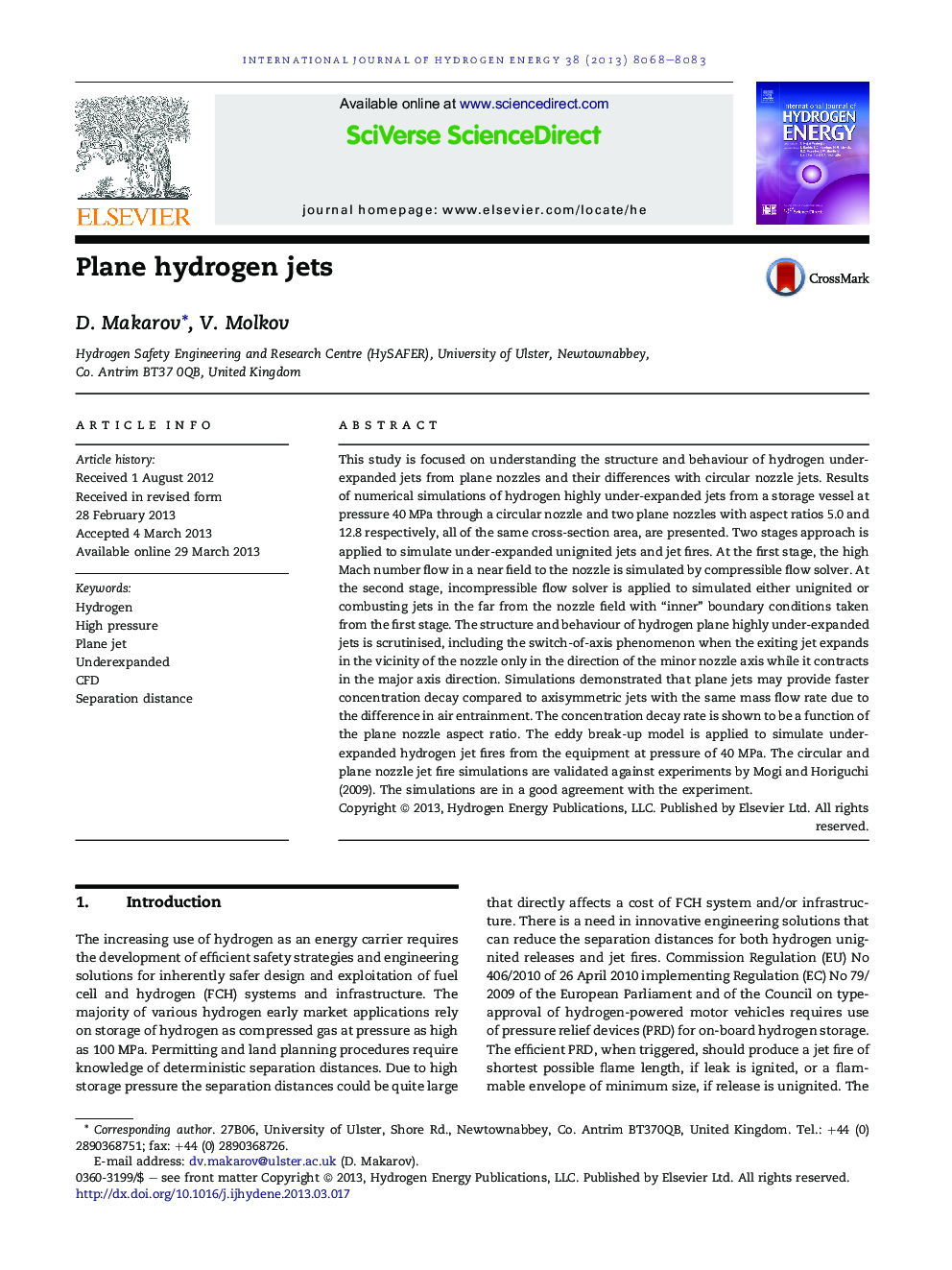| Article ID | Journal | Published Year | Pages | File Type |
|---|---|---|---|---|
| 1273665 | International Journal of Hydrogen Energy | 2013 | 16 Pages |
•Circular and plane (aspect ratios 5.0 and 12.8) underexpanded hydrogen jets were simulated.•Axis switching phenomena was studied for a range of storage pressures 0.5–40 MPa.•Axis switch for underexpanded plane jet develops due to pressure gradient distribution around nozzle exit.•Flattened jet profile was develop after axis switch and retained at least down to low flammability limit.•Larger entrainment rate associated with plane jets provided smaller size of flammable envelope.
This study is focused on understanding the structure and behaviour of hydrogen under-expanded jets from plane nozzles and their differences with circular nozzle jets. Results of numerical simulations of hydrogen highly under-expanded jets from a storage vessel at pressure 40 MPa through a circular nozzle and two plane nozzles with aspect ratios 5.0 and 12.8 respectively, all of the same cross-section area, are presented. Two stages approach is applied to simulate under-expanded unignited jets and jet fires. At the first stage, the high Mach number flow in a near field to the nozzle is simulated by compressible flow solver. At the second stage, incompressible flow solver is applied to simulated either unignited or combusting jets in the far from the nozzle field with “inner” boundary conditions taken from the first stage. The structure and behaviour of hydrogen plane highly under-expanded jets is scrutinised, including the switch-of-axis phenomenon when the exiting jet expands in the vicinity of the nozzle only in the direction of the minor nozzle axis while it contracts in the major axis direction. Simulations demonstrated that plane jets may provide faster concentration decay compared to axisymmetric jets with the same mass flow rate due to the difference in air entrainment. The concentration decay rate is shown to be a function of the plane nozzle aspect ratio. The eddy break-up model is applied to simulate under-expanded hydrogen jet fires from the equipment at pressure of 40 MPa. The circular and plane nozzle jet fire simulations are validated against experiments by Mogi and Horiguchi (2009). The simulations are in a good agreement with the experiment.
